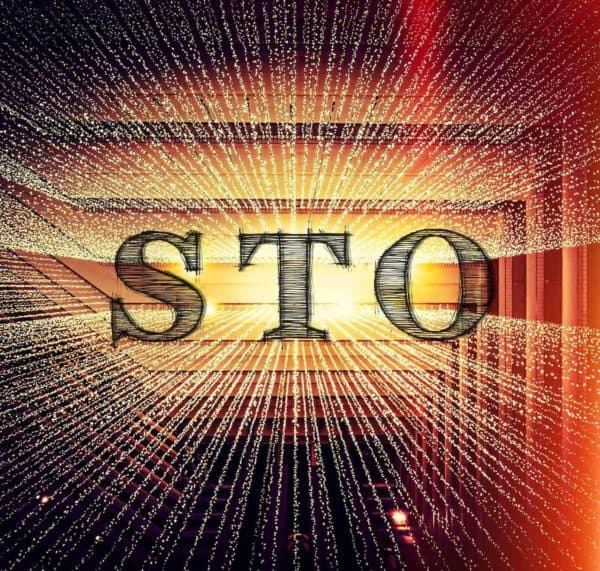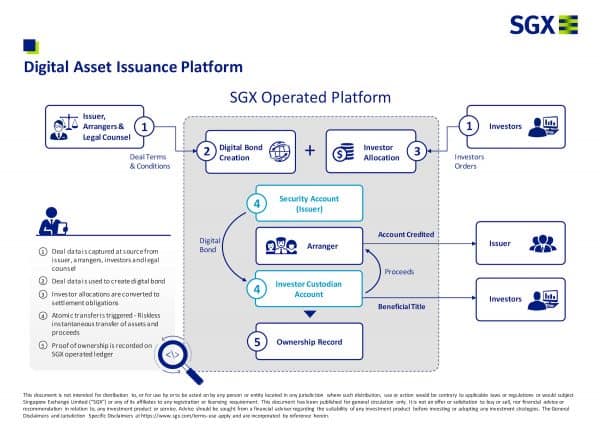Back in December, I wrote a piece for Coindesk’s Year in Review 2019 entitled “Security Token Offerings Are (Finally) Set for Takeoff in 2020”. This was before word of COVID-19 became widespread and before many of the cataclysmic events of 2020 were even imaginable. Thus with hindsight, it’s worth taking a look at the first half of 2020 and the incredible institutional growth in the use of security tokens and other digital asset platforms for capital markets transactions. Furthermore, while Ethereum was by far the most dominant protocol of 2019, 2020 has so far seen a real shift to institution backed protocols such as R3’s Corda, Axoni’s AxCore, Digital Asset’s DAML, as well as an increasing use of IBM’s Hyperledger. Looking at Fortune’s Blockchain 50 which came out in February, it certainly was a harbinger of what to come.
It is very hard to select out of the 20+ major institutional announcements this year that I know of which are the most significant, but July was certainly the most active month. That being said, the early announcements along with some of the most recent seem to be the most significant to me.
Thus, perhaps it is worth starting with Citi (NYSE:C) and Goldman Sach’s (NYSE:GS) February announcement to go live with a blockchain-based equity swaps platform powered by Axoni. This was a huge win for Axoni, which was founded in 2013 and counts Citi and Goldman Sachs as investors along with several other institutions. This was also a fantastic use case where counterparties need to trust trade data and there is an existing infrastructure problem. It was also a harbinger of Goldman’s growing interest in the digital asset this year.
“Goldman Sachs continues to embrace new technology solutions that enhance our front-to-back client experience and deliver operational efficiencies,” said Brian Steele, global head of market solutions at Goldman Sachs.”
 Goldman Sachs went on to make two significant announcements in August. Firstly, the firm made “Mathew McDermott, a managing director who ran the investment bank’s internal funding operations, its new global head of digital assets” as reported by CNBC.
Goldman Sachs went on to make two significant announcements in August. Firstly, the firm made “Mathew McDermott, a managing director who ran the investment bank’s internal funding operations, its new global head of digital assets” as reported by CNBC.
Secondly, McDermott announced to CNBC on August 10th that Goldman Sachs was “exploring the commercial viability of creating our own fiat digital token” in possible collaboration with JPM and Facebook. McDermott certainly is a believer, and said in an interview that “In the next five to 10 years, you could see a financial system where all assets and liabilities are native to a blockchain, with all transactions natively happening on-chain”. Goldman has proceeded to make recruiting for digital asset roles a priority for the year.
Axoni got another big win in May, with the announcement that OCC, the world’s largest equity derivatives clearing organization, had selected Axoni to develop and implement a distributed ledger technology solution to replace its existing securities lending infrastructure, again utilizing AxCore, Axoni’s DLT protocol.
June and July were really R3 and Corda’s time to shine. June saw Nasdaq announce its new Marketplace Services Platform for digital assets. Built in collaboration with Digital Asset, R3, Symbiont, and Microsoft, it is aimed at a wide asset class, not just security token offerings (STOs).
Although not clear from the press release whether Corda or DAML is predominantly being used, it was clearly a big win for R3.
The functionality is significant, including the issuance of assets and trading through pre-trade risk management, market surveillance, and efficient digital custody and settlement. A very good Forbes article noted:
“What separates this from the usual announcements around the adoption of blockchain is that it involves mature companies with large corporate clients coming together to offer what has been up to now seen as an interesting-albeit-immature technology that many believed was still many years away from large scale adoption.”
What does this mean for Crypto native companies such as Securrency and TokenSoft – well Johan Toll had a rather dry answer to that:
“We run and operate 28 markets ourselves and have delivered technology for thirty years so we are very well-known in the industry of capital markets as a trusted provider of services and technology, so I think we clearly see that we have an edge there.”
There was another more in-depth Forbes article on the Nasdaq Marketplace Services Platform and Digital Asset Suite in July that is also worth mentioning and that demonstrates the breadth of Nasdaq’s vision.
July also saw two more powerful announcements for R3. Firstly, David Rutter, founder of LiquidityEdge and R3, announced that he was going to take on a new role in addition to his role as CEO of R3, by building a new DLT based trading platform for the corporate bond market called LedgerEdge, alongside some significant industry veterans including David Nicol (IBM/R3) as CEO, Ian Chicken (ICAP/BrokerTec) COO and Bob Bose (Santander/NYSE Euronext) as CTO.
LedgerEdge intends to apply a combination of blockchain technology, AI, and secure enclave computing to improve liquidity by enabling the discovery of prices and trades while preventing data leakage. Then there was an announcement on July 27 almost entirely overlooked by the digital asset industry, that 85% of Italian banks are exchanging Interbank transfer data on R3’s Corda. The Italian banking industry is huge and that’s an incredible demonstration of the use case that is highly likely to get picked up by other countries.
 September has definitely been Digital Asset’s month. On September 1, Singapore Exchange (SGX) announced it completed its first digital bond issuance. Working with HSBC Singapore and Temasek, SGX launched a S$400 million 5.5-year public bond issue and a follow-on S$100 million tap of the same issue by Olam International. SGX utilized DAML, the smart contract language created by Digital Asset, to model the bond and its distributed workflows
September has definitely been Digital Asset’s month. On September 1, Singapore Exchange (SGX) announced it completed its first digital bond issuance. Working with HSBC Singapore and Temasek, SGX launched a S$400 million 5.5-year public bond issue and a follow-on S$100 million tap of the same issue by Olam International. SGX utilized DAML, the smart contract language created by Digital Asset, to model the bond and its distributed workflows
Then on September 9, BNP Paribas announced that it was joining forces with Digital Asset to develop DLT trade and settlement apps with real-time access to the Australian Securities Exchange (ASX) and Hong Kong Exchange (HKEX)’s anticipated DLT-based trading and settlement platforms. The Digital Asset team spoke strongly about the use case for DLT in this instance: Jon Rout, Business Development Director APAC for Digital Asset, said:
“Our work with BNP Paribas has the potential to change the way organisations design their post-trade and custodial functions – increasing the scope for innovation and reducing risk. BNP Paribas Securities Services’ vision of bringing real-time post-trade information to clients and leveraging DAML smart contracts to automate client process flows at scale is an indication of just how transformative DLT will be for custody services.”
Such moves by legacy and institutional players point towards massive adoption in the near future. This is the digital asset pivot point, but it seems to be leaving crypto native companies behind, which obviously begs the question of why. Perhaps it is that crypto native companies have earned a reputation for not living up to their promises or lack the leadership to take the industry to the next level of sophistication. Perhaps it is simpler to look at who is running Axoni, R3 and Digital Asset and how they have gone about it.
Greg Schvey, co-founder CEO of Axoni, has a BS in Finance from Cornell. He then spent the first three years of his career at Citigroup, working as a Fixed Income Analyst. Jeff Schvey, Greg’s brother and co-founder and CTO of Axoni has a BS in Operations Research from Cornell as well as a Masters in Engineering in Applied Operations Research. Jeff went on to work at Raytheon for five years before founding TradeBlock and Axoni. Greg and Jeff founded TradeBlock, the world’s leading provider of institutional trading tools for digital currencies attracting investment from Andreessen Horowitz and FinTech Collective in 2014. They also co-founded Axoni alongside TradeBlock, and while the Axoni venture round in 2014 is confidential, in 2016 they raised for Axoni again from Andreessen Horowitz and FinTech Collective, and also raised from institutional investors such as JP Morgan, Citigroup, Thompson Reuters, and Wells Fargo. In 2018, Greg and Jeff were recognized as two of the 100 Most Intriguing Entrepreneurs of 2018 by Goldman Sachs at its Builders + Innovators Summit in Santa Barbara, California.
David Rutter, founder, and CEO of R3 has a BS in Business Administration and International Business from Villanova University. He worked in increasingly senior roles in institutional broker dealer businesses for over 20 years before founding R3 in 2013 and LiquidityEdge in 2015. In 2017, R3 did its first raise, raising over $100M from the likes of Wells Fargo, US Bank, RBS, Temasek, and SEB Venture Capital.
Digital Asset was founded in 2014 by Sunil Hirani, Don R. Wilson, and Yuval Rooz. Blythe Masters was named as CEO in March 2015; she joined after 27 years in various senior roles at JP Morgan. Yuval Rooz, former CTO and CFO was named CEO in 2019 after Blythe stepped into a number of board member roles. Yuval has a BSc in EE from Georgia Institute of Technology. He worked in various trading roles for 6 years and holds FINRA Series 63 and 7, before co-founding Digital Asset. Digital Asset has raised a total of $142.2M over five rounds. It raised its first round in 2016 from the likes of JP Morgan, Goldman Sachs, Deutsche Borse, DTCC, and Mouro Capital. Subsequent rounds have included institutional investors such as BNP Paribas, ABN Amro, Broadridge, Citi, CME Group, Deutsche Börse Group, IBM and Banco Santander.
What do these three companies have in common?
Founders with relevant degrees and capital markets industry experience who raised from institutional investors within 2 years of setting up shop. They built trust with these investors through successive rounds and over time, convinced them to become customers, which was undoubtedly part of the investment thesis of these investors.
A very large chasm has opened up this year between companies like Axoni, R3 and Digital Asset and other native crypto companies in the same space. How could that ground be regained? Put in place leadership with appropriate backgrounds and experience and raise funds from investors who are going to provide thought and direction as well as funds.
 Emma Channing – is the founder of the Satis Group, a blockchain advisory firm with expertise in security tokens. Channing has led the digital asset industry, for the last four years, as a subject matter expert on broad use cases for blockchain technology including, security token offerings, blockchain-for-capital-markets platforms, custody, stablecoins, CBDCs, digital identity, and various aspects of associated compliance and governmental communication strategies. Channing also co-founded Global Blockchain Convergence, a 150+ person global blockchain policy laboratory and think tank, and founded NodeWomen, a 100+ person group to support women in Fintech, blockchain, crypto, and digital assets. As an attorney, Channing has directed international teams and working groups across several verticals, including the C-Suite, board members and investors, and technical experts/engineering teams, to deliver compliant and robust digital asset projects. Channing is a graduate of Stanford Law School (LLM) and Durham Law School (LLB, LLM) and is admitted in the UK, California, Colorado and New York. She holds FINRA Series 63 and 79 licenses.
Emma Channing – is the founder of the Satis Group, a blockchain advisory firm with expertise in security tokens. Channing has led the digital asset industry, for the last four years, as a subject matter expert on broad use cases for blockchain technology including, security token offerings, blockchain-for-capital-markets platforms, custody, stablecoins, CBDCs, digital identity, and various aspects of associated compliance and governmental communication strategies. Channing also co-founded Global Blockchain Convergence, a 150+ person global blockchain policy laboratory and think tank, and founded NodeWomen, a 100+ person group to support women in Fintech, blockchain, crypto, and digital assets. As an attorney, Channing has directed international teams and working groups across several verticals, including the C-Suite, board members and investors, and technical experts/engineering teams, to deliver compliant and robust digital asset projects. Channing is a graduate of Stanford Law School (LLM) and Durham Law School (LLB, LLM) and is admitted in the UK, California, Colorado and New York. She holds FINRA Series 63 and 79 licenses.


